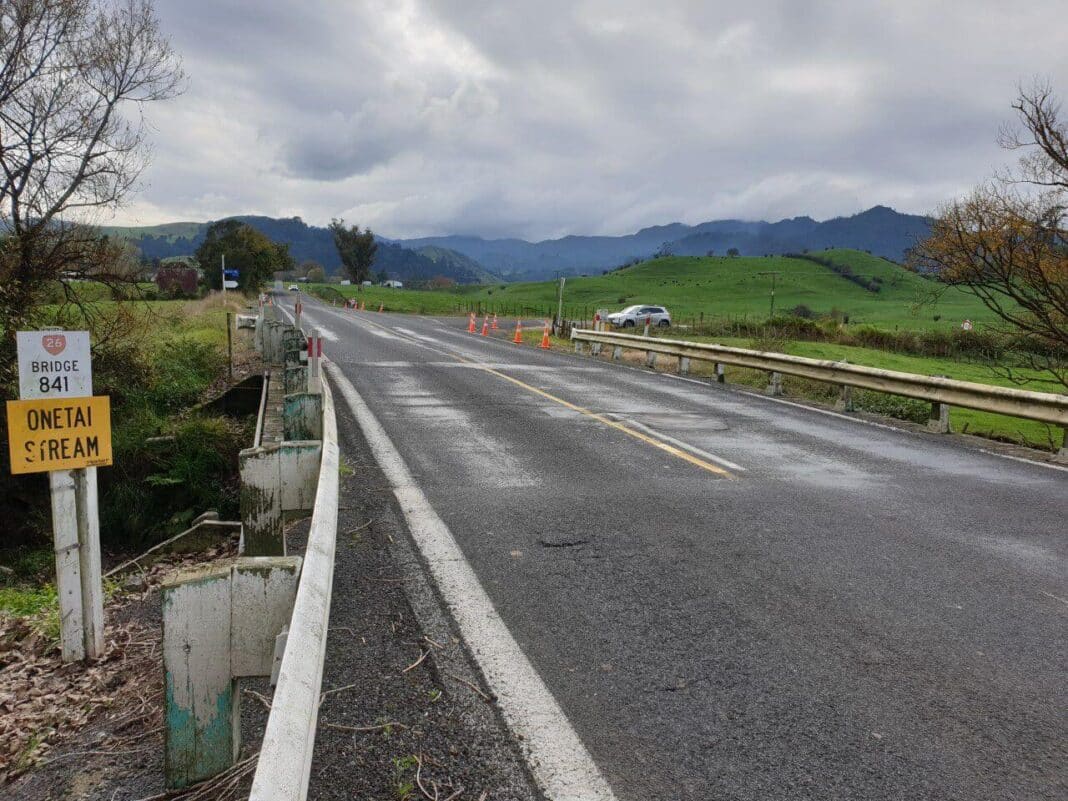The new Onetai Bridge – the first timber-based state highway bridge constructed in 50 years – represents a major shift towards low embodied carbon materials.
As reported in the Waikato Herald, the state highway bridge, located halfway between Paeroa and Kopu in the North Island, spans a mere 9 metres across a small stream.
However, its replacement denotes a major progression in bridge design for the Waka Kotahi NZ Transport Agency (formerly the New Zealand Transport Agency).
Rob Campbell, Waka Kotahi Regional Manager of Maintenance and Operations, clarifies that the timber aspects in the new design distinguish this project from conventional bridge replacements.
“Road bridges in New Zealand generally utilise concrete or steel. This will be the first to herald a return to a more sustainable design, incorporating timber beams and a deck,” he said.
Campbell envisages this becoming the new standard, turning an ostensibly minor project into a ground-breaking shift in design for future state highway bridge replacements.
The key is in the layering – employing engineered glulam, which Campbell asserts is twice as strong per kilogram compared to steel and specifically designed for durability and resilience.
He expects the bridge to endure at least 100 years, linking the greater Waikato region with the Coromandel Peninsula and serving as an essential part of the state highway network.
Glulam is increasingly popular worldwide for bridge construction on highways and local roads alike.
Campbell emphasised the advantages of using glulam, stating, “The primary component of glulam, radiata pine, is grown right here in New Zealand.”
“Glulam has an extended lifespan with minimal maintenance needed, effectively absorbing energy from earthquakes and offering good fire resistance.”
Though wood may appear to be a fire risk, large-section timber performs well in fires as it chars at a known rate and does not deform like steel.
Campbell further notes that one of the main benefits of a timber structure is its light weight.
“This enables us to significantly reduce the size of the foundations, which consequently lowers carbon emissions, material costs, and construction time.”
The upcoming Onetai Bridge will retain the same length as its predecessor but be 3 metres wider, boasting improved safety features.
These include a new type of side barrier that can be fitted right on the bridge’s outer edge, offering more lane space for drivers, and reducing the risk of head-on collisions.
The bridge will rest on simple concrete foundations and incorporate new scour protection both upstream and downstream.
Scour, triggered by changes in water flow or river flooding, is a leading cause of bridge failures. With the climate changing rapidly, there is a renewed urgency to apply scour protection for maintaining bridge safety.
In 2020, the Waka Kotahi agency carried out a business case study for the replacement of the existing two-lane bridge. Although still safe to use, it is nearing the end of its useful life.
Following the approval of construction funding under the 2021–24 National Land Transport Programme, the project has moved into the detailed design stage, with construction set to begin this October.
- Interested in timber bridges? Why not check out Wood Central’s Gulou Bridge Waterfront case study.






